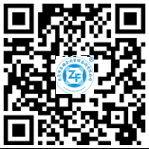Contact Us
Contact: Miss Luo
Phone:13798904733
18928298220
Tel:0769-22805501
QQ:691743147
Eamil:dgzf@dgzf0769.com
Address:Room 104, Building 6, Haiyi Palace Shangdu, No. 66 Hujing Avenue, Houjie Town, Dongguan City, Guangdong Province
a new evolution
ISO/TS 16949 was originally created in 1999 and has now become one of the most widely used international standards in the automotive industry. In 2016, the automotive industry will evolve together as the International Automotive Task Force (IATF) publishes a new global industry standard.
ISO/TS 16949 was originally created by the IATF in conjunction with ISO Quality Management Technical Committee ISO/TC 176. Therefore, ISO/TS 16949 is combined with ISO 9001 by including specific automotive industry requirements.
In October 2016, the IATF published a revised automotive industry standard, the first edition of which will be known as "IATF 16949".
This new standard will replace the current ISO/TS 16949:2009 and clarify the quality management system requirements for organizations within the automotive industry.
IATF 16949 complies with and refers to the latest version of the ISO quality management system standard ISO 9001:2015, and fully follows the structure and requirements of the standard. IATF 16949 is not a stand-alone quality management standard, but is implemented in conjunction with ISO 9001:2015 as a complement. This means that organisations within the automotive industry seeking IATF 16949 certification must also comply with ISO 9001:2015.
high risk, high cost
The automotive industry produces high-risk, high-cost products and services with tightly controlled industry requirements; therefore, IATF 16949 is more in line with the needs of its stakeholders. According to the IATF 16949 revision team, the goal of this standard is to develop a quality management system in the supply chain that provides continuous improvement, emphasizes defect prevention, and reduces variation and waste.
smooth transition
IATF 16949 plays an important role in ensuring compliance with quality requirements, thereby reducing the risk of product failure and service failure for automotive production, service and/or parts organizations. IATF 16949 certification is mandatory for organizations that want to manufacture parts for the automotive industry.
To point you in the right direction, this white paper will cover the following topics:
• Transition guidance
• Transition Timeline
• New high-level structure
• IATF 16949 Change Preview
Amendment intent
ISO standards are reviewed every five years to determine if changes are required to keep them current and relevant. Both business needs and expectations have changed significantly since the revision of ISO 9001:2008. The new ISO 9001:2015 is more in line with customer requirements, adapts to new technologies, integrates better with complex supply chains, and addresses the need for more sustainability initiatives. This is achieved by better understanding the context of the organization and its stakeholders, and taking appropriate risk and opportunity responses at each level.
IATF 16949 fully supports these changes to ISO 9001:2015, with additional requirements more in line with the needs of the automotive industry. Alignment with the ISO 9001:2015 structure makes it easier for organizations that need to implement more than one quality management system standard. If IATF 16949 is implemented and managed properly, an organization will:
• Recognized by regulators
• Produce safer and more reliable products
• Meet or exceed customer requirements
• Improve processes and documentation
Transition Guidance: Suppliers
The IATF has notified that organizations will have only one transition option: a transition that complies with the organization's current ISO/TS 16949 audit cycle.
Organizations transitioning from ISO/TS 16949:2009 to IATF 16949 must transition to the new standard by passing a transition audit in line with the organization's current regularly scheduled recertification audit or surveillance audit (as defined in IATF Rule 5.1.1).
For organizations currently certified to ISO/TS 16949, here is a suggested transition action plan:
1. Familiarize yourself with ISO 9001:2015 and IATF 16949.
2. Conduct an organizational gap analysis against ISO 9001:2015 and IATF 16949 to identify gaps that need to be addressed in order to ensure that the organization's Quality Management System (QMS) complies with all new requirements, including those related to external providers.
3. Based on the results of the gap analysis, develop an organization-specific implementation plan.
4. Provide appropriate training for all individuals involved in the implementation of ISO 9001:2015 and IATF 16949 in the organization.
5. Update existing systems and provide evidence that the organization complies with the new requirements.

 简体中文
简体中文
